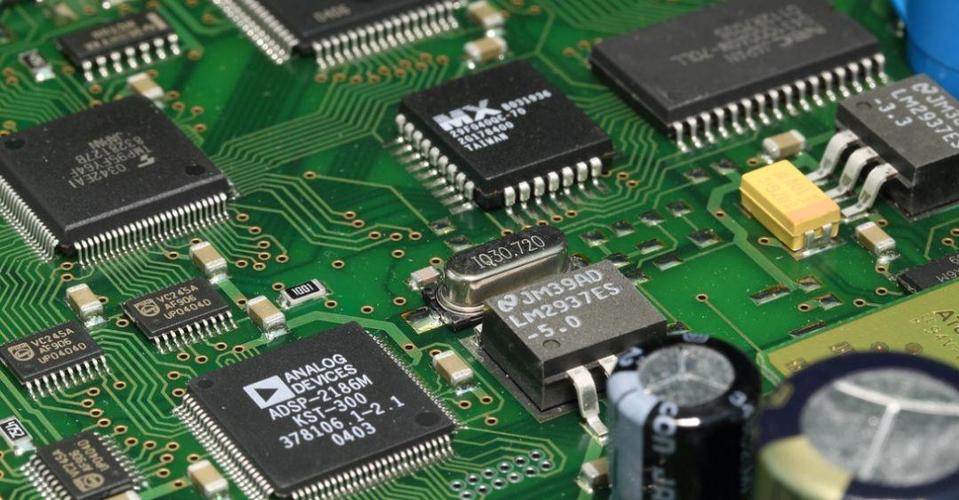introduction
For a motherboard, in addition to the parts materials (such as the use of high-quality capacitors, three-phase power lines, etc.), the wiring and layout design of the motherboard is also very important. Since there are many forms of motherboard routing and layout design and very technical, this is also a major difference between high-quality motherboards and low-quality motherboards. But how can one tell whether a motherboard is well designed or not? Below, we will do a simple analysis on this issue.

Interpret the layout design of the motherboard
The layout of the motherboard is mainly embodied from the position arrangement of the various components on the PCB board(such as integrated circuit chips, resistors, capacitors, slots, etc.), as well as line routing. A good motherboard looks like an exquisite work of art in the eyes of experts.
Usually, chipset manufacturers will provide chipset design guidelines (CHIPSET DESIGN GUIDE) when supplying motherboard manufacturers. At the same time, there are generally standard-based templates, the so-called "engineering boards, public boards". Major motherboard manufacturers generally follow the standard PCB board design and make motherboards that meet the technical standards provided by the official chipset. The quality of such products is guaranteed, but the price is higher. On the contrary, some small and medium-sized manufacturers often make drastic changes to the main board structure in order to balance the relationship between cost and function. The quality of these products can be described as mixed.
Interpreting the wiring design of the motherboard
1. The concept of equal length of clock line
On a motherboard, the distance from the North Bridge chip to the CPU, memory, and AGP slots should be equal. This is the basic requirement of motherboard design, the so-called "clock line equal length" concept. As the bridge between the CPU and the memory, the Northbridge chip is very particular about the layout. For example, some motherboard manufacturers with development capabilities adopt a clever design that rotates 45 degrees in the layout of the north bridge chip, which not only shortens the wiring length between the north bridge chip and the CPU, memory socket and AGP socket, but also more The clock lines can be made the same length.
2. Misunderstanding of snake walking line
Snake line is a common form of wiring on computer motherboards. Those who have played the Nokia mobile game "Snake" should not be unfamiliar. The wiring design on the motherboard is a professional knowledge. Some people think that the more snaking lines, the higher the design level. This view is wrong.
In fact, there are two reasons for adopting a snake line on a motherboard:
One is to ensure the equal length of the wiring lines. Because the clock line from the CPU to the Northbridge chip is different from the circuit board circuit of ordinary household appliances, the signals running at high speed at a frequency of about 100MHz on these circuits are very sensitive to the length of the circuit. Clock lines of unequal length will cause the signal to be out of sync, and then cause system instability. Therefore, certain lines must be routed in a curved manner to adjust the length.
Another common reason for using a snake line is to minimize the impact of electromagnetic radiation (EMI) on the rest of the motherboard and the human body. Because of the high speed and monotonous digital signal, it will interfere with the normal operation of various parts in the motherboard. Usually, an easy way for motherboard manufacturers to suppress EMI is to design a serpentine line to absorb as much radiation as possible. However, we should also see that although the use of serpentine lines has the above benefits, it does not mean that the more serpentine lines used when designing the motherboard wiring, the better. Because too many and dense motherboard traces will cause uneven layout of the motherboard, which will have a certain impact on the quality of the motherboard. Good wiring should make the line density of each part of the motherboard have little difference, and should be distributed as evenly as possible, otherwise it is easy to cause the instability of the motherboard.
3. Avoid using "flying wire" motherboards
To judge the wiring of a motherboard, it can also be seen from the turning angle of the wiring. A good motherboard wiring should be more even and tidy, and the turning angle of the wiring should not be less than 135 degrees. Because traces with too small turning angles are equivalent to inductive components in high-frequency circuits, they will interfere with other devices.
And some motherboard manufacturers with poor design level often lead to defects in the final product due to technical strength when designing the wiring. At this time, manual repair is adopted to solve the problem. This kind of wire that appears due to unreasonable design is called "flying wire." If there are flying wires on a motherboard, it proves that there are some problems with the wiring design of the motherboard.
The above is a brief introduction to the motherboard PCB design, Ipcb also provides PCB manufacturers and PCB manufacturing technology